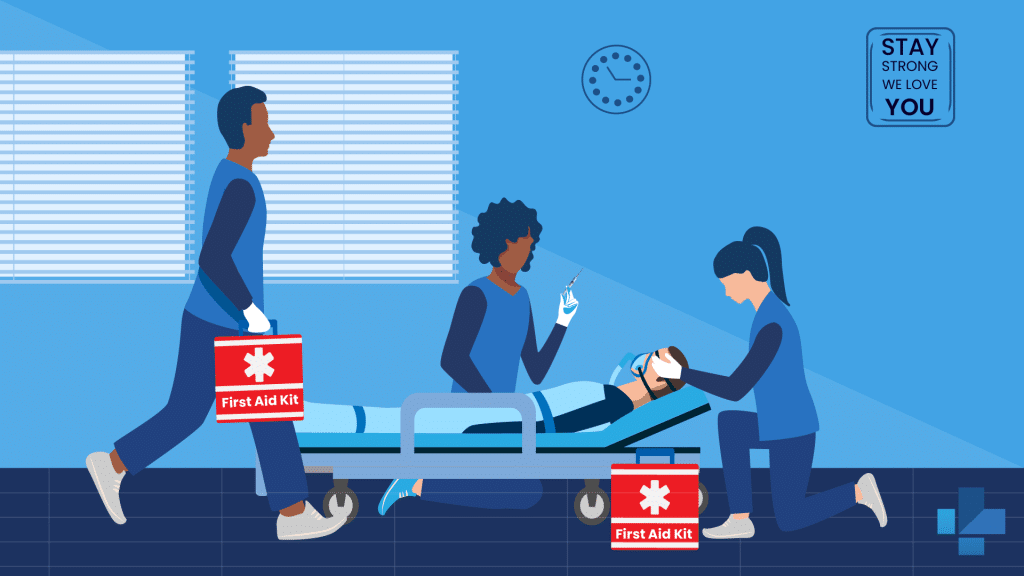
First aid is a vital skill that empowers individuals to respond promptly and effectively in emergency situations, potentially making the difference between life and death. However, despite the importance of first aid training, common mistakes can compromise the effectiveness of the assistance provided. In this comprehensive blog, we’ll delve into five prevalent first aid mistakes and explore how to avoid them to ensure optimal emergency response.
- Neglecting Personal Safety
A fundamental principle of first aid that is often overlooked is the importance of personal safety. In the urgency of responding to an emergency, individuals may neglect to assess the situation for potential hazards, putting themselves at risk. Before intervening, it is crucial to conduct a quick but thorough evaluation of the environment. Look for dangers such as traffic, fire, or hazardous materials that could pose additional threats. Ensuring your safety not only protects you but also allows you to provide more effective assistance to the victim.
To avoid this mistake, remember the mantra: “Scene safe, gloves on.” Always prioritize your well-being and take the necessary steps to eliminate or minimize potential dangers before proceeding with first aid.
- Ignoring the Emergency Services
In the chaos of an emergency, some individuals may underestimate the severity of the situation and fail to call for professional help promptly. This delay can have serious consequences, especially in cases of heart attacks, strokes, or severe trauma. Regardless of your confidence in your first aid skills, it is essential to recognize when a situation requires advanced medical assistance.
To avoid this mistake, follow the “5-Minute Rule.” If the victim’s condition does not improve within the first five minutes of providing first aid, or if the situation involves a life-threatening emergency, call emergency services immediately. Always remember that professional help is an essential component of effective emergency response.
- Incorrect Use of Tourniquets:
Tourniquets are invaluable tools for controlling severe bleeding, but their improper use can lead to complications. When faced with a significant bleed, individuals may apply a tourniquet too tightly, increasing the risk of tissue and nerve damage. Additionally, leaving a tourniquet on for an extended period can have detrimental effects.
To use tourniquets effectively and safely, follow these guidelines:
- Apply the tourniquet proximal to the bleeding site.
- Tighten the tourniquet until the bleeding stops.
- Note the time of application.
Loosen the tourniquet briefly every 15-20 minutes to prevent complications.
Ensure that you have the necessary training on tourniquet application and adhere to recommended practices to prevent unintended harm.
- Improper CPR Technique
Cardiopulmonary resuscitation (CPR) is a life-saving skill that demands precision. Unfortunately, incorrect CPR techniques are common and can compromise the effectiveness of the intervention. Two primary mistakes often observed are inadequate chest compressions and insufficient rescue breaths.
To ensure proper CPR technique:
- Provide adequate chest compressions by pressing hard and allowing the chest to fully recoil between compressions.
- Maintain the recommended compression-to-ventilation ratio (30:2 for adults).
- Prioritize high-quality chest compressions over ventilation.
Regular training and staying updated on CPR guidelines are essential for preventing these mistakes. Engage in CPR refresher courses to reinforce your skills and knowledge.
- Neglecting Emotional Support
First aid is not only about addressing physical injuries but also providing emotional support. Neglecting the emotional well-being of the victim or those witnessing the incident can hinder overall recovery. In high-stress situations, individuals may forget the importance of reassurance, empathy, and comfort.
To avoid this oversight:
- Stay calm and maintain a reassuring demeanor.
- Offer verbal comfort and reassurance to the victim.
- Address the emotional needs of those present, acknowledging their feelings.
Remember that emotional support contributes significantly to a positive outcome and aids in the overall recovery process.
Conclusion
In mastering first aid, understanding and avoiding common mistakes are crucial for effective emergency response. By prioritizing personal safety, recognizing the need for professional help, using tools correctly, practicing proper CPR techniques, and offering emotional support, individuals can enhance their ability to provide successful first aid. Continuous education, regular training, and staying updated on first aid guidelines empower individuals to be confident, efficient, and compassionate responders in critical situations.















